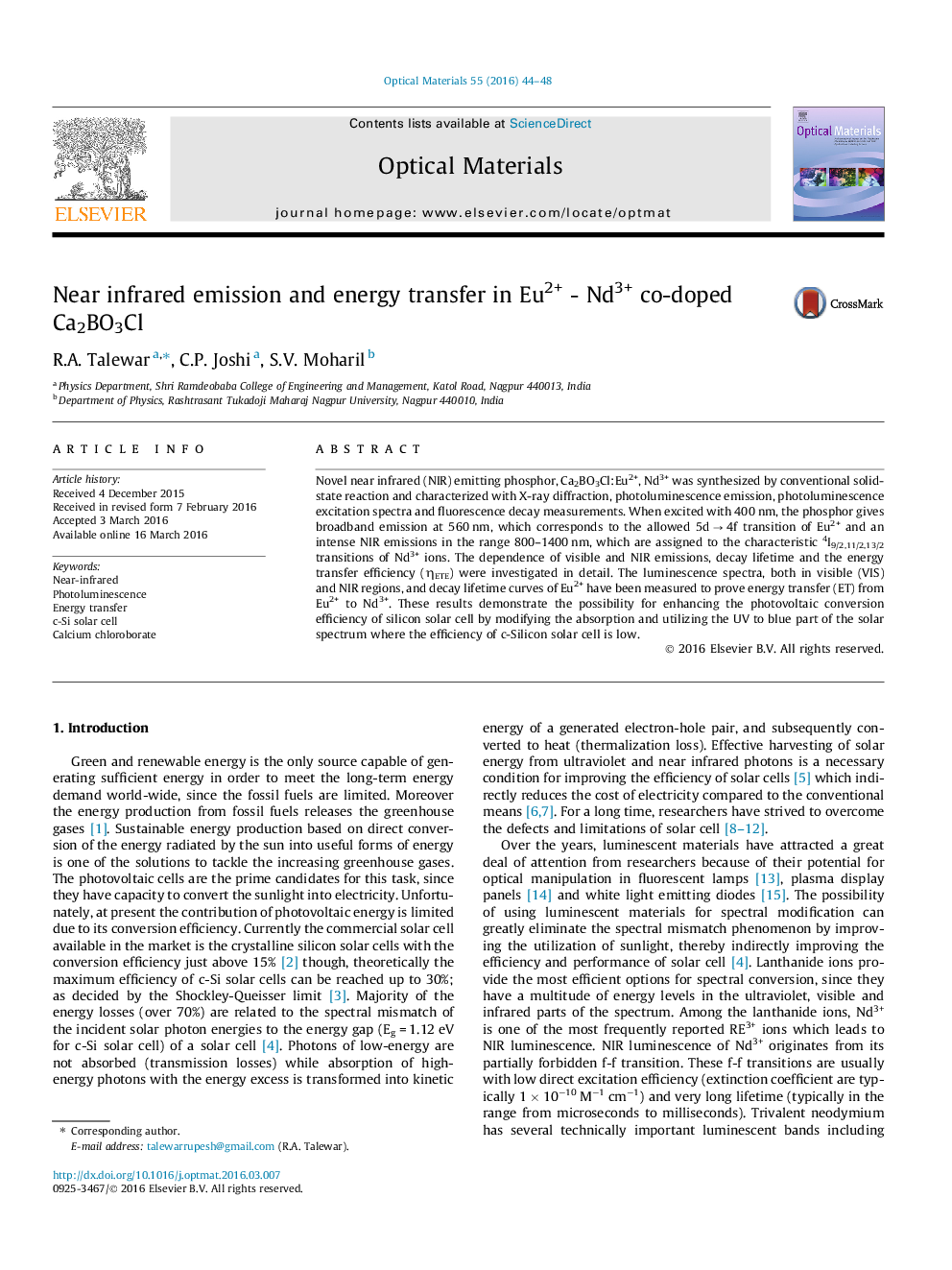| Article ID | Journal | Published Year | Pages | File Type |
|---|---|---|---|---|
| 1493329 | Optical Materials | 2016 | 5 Pages |
•Novel near infrared (NIR) emitting phosphor, Ca2BO3Cl:Eu2+, Nd3+ synthesized.•Intense Eu2+ visible and Nd3+ NIR emissions observed.•Visible and NIR emissions, decay lifetime and Eu2+ → Nd3+ energy transfer efficiency (ηETE) investigated in detail.•Possibility for enhancing the photovoltaic conversion efficiency of silicon solar cell indicated.
Novel near infrared (NIR) emitting phosphor, Ca2BO3Cl:Eu2+, Nd3+ was synthesized by conventional solid-state reaction and characterized with X-ray diffraction, photoluminescence emission, photoluminescence excitation spectra and fluorescence decay measurements. When excited with 400 nm, the phosphor gives broadband emission at 560 nm, which corresponds to the allowed 5d → 4f transition of Eu2+ and an intense NIR emissions in the range 800–1400 nm, which are assigned to the characteristic 4I9/2,11/2,13/2 transitions of Nd3+ ions. The dependence of visible and NIR emissions, decay lifetime and the energy transfer efficiency (ηETE) were investigated in detail. The luminescence spectra, both in visible (VIS) and NIR regions, and decay lifetime curves of Eu2+ have been measured to prove energy transfer (ET) from Eu2+ to Nd3+. These results demonstrate the possibility for enhancing the photovoltaic conversion efficiency of silicon solar cell by modifying the absorption and utilizing the UV to blue part of the solar spectrum where the efficiency of c-Silicon solar cell is low.
Graphical abstractFigure optionsDownload full-size imageDownload high-quality image (132 K)Download as PowerPoint slide
